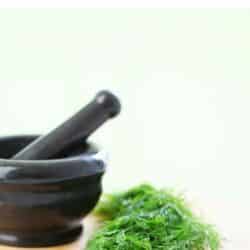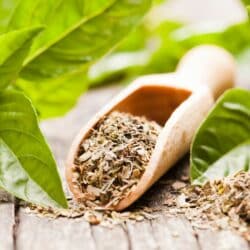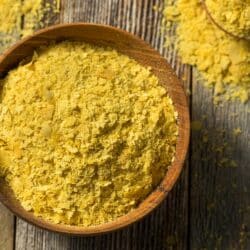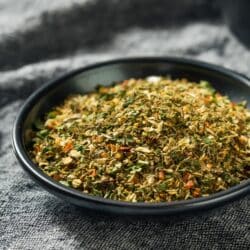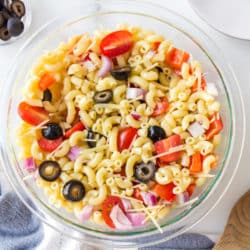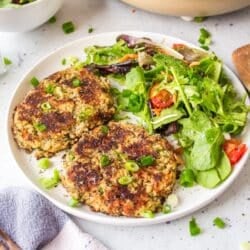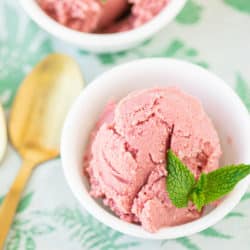7 Substitutes for Fresh Dill (& How Much to Use)
Dill is a delicious herb that can be used in many dishes. However, if you don’t have any dill on hand, or don’t want to use it all up, there are plenty of substitutes that you can use instead. Here are some of the best substitutes for fresh dill including dried dill, fennel, tarragon, parsley, basil, thyme, and cilantro.
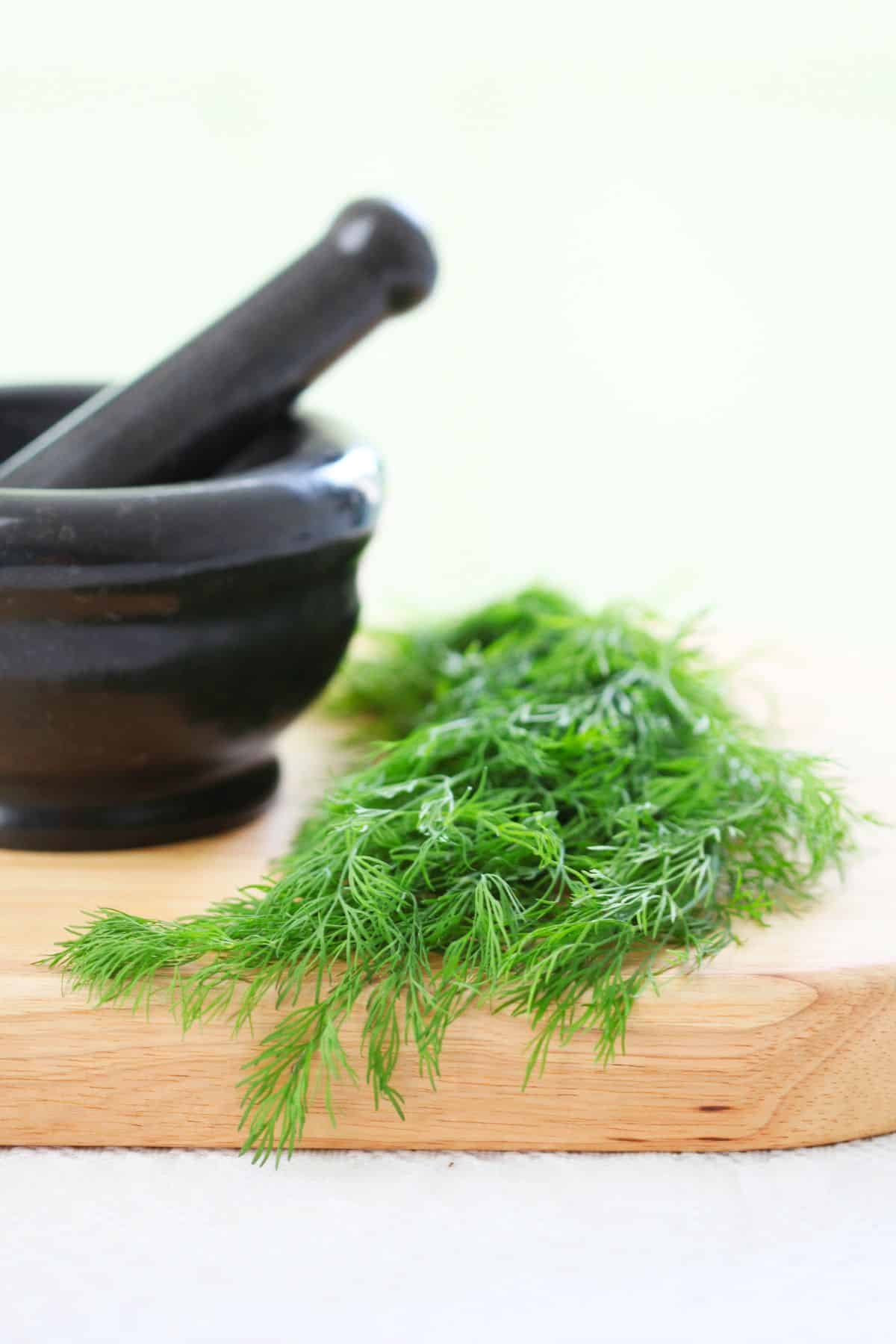
Dill Substitutes
Something to note here is that dill has such a unique and distinctive flavor that it is very difficult to find a true substitute. Nothing tastes quite like dill!
For some recipes, the use of dill is important unless you don’t mind significantly altering the taste of the finished dish. This is true for dishes like tzatziki, the traditional Greek cucumber and yogurt salad. Dill is a key ingredient and main flavor, so to substitute it with anything else would be to change the essence of the dish.
Other recipes, however, can be more forgiving-especially if dill isn’t the featured ingredient. Here are some suitable fresh herbs and dried popular herbs that you can try in place of dill.
1. Dried Dill
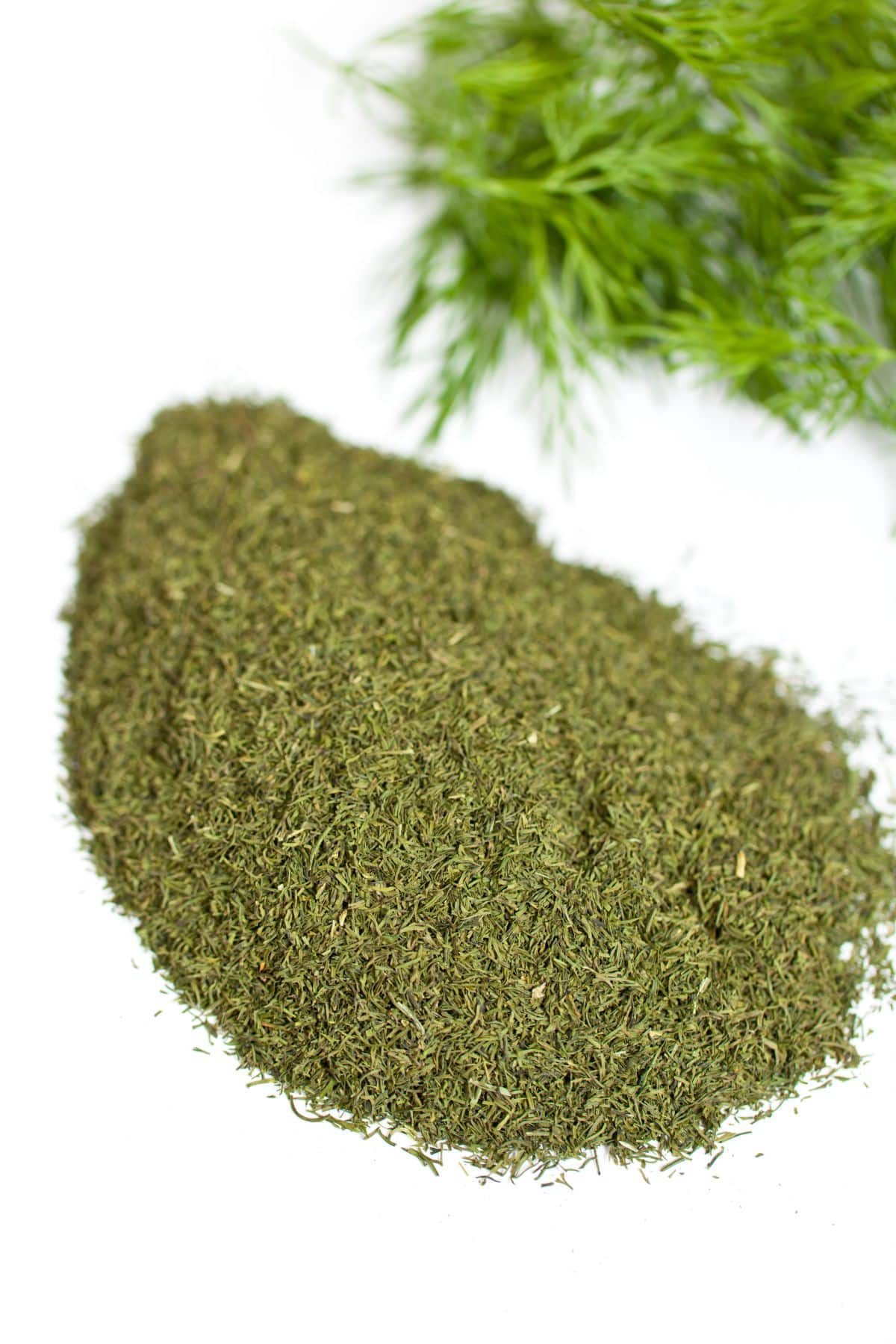
Dried dill is the closest replacement to fresh dill in terms of flavor. The problem is that dried dill has none of the brightness of fresh and is somewhat inferior in taste.
Dried dill works best in cooked dishes like soups and stews, but is not an ideal alternative to fresh in salads and dressings.
For 1 tablespoon of fresh dill, use 1 teaspoon of dried dill.
2. Fennel
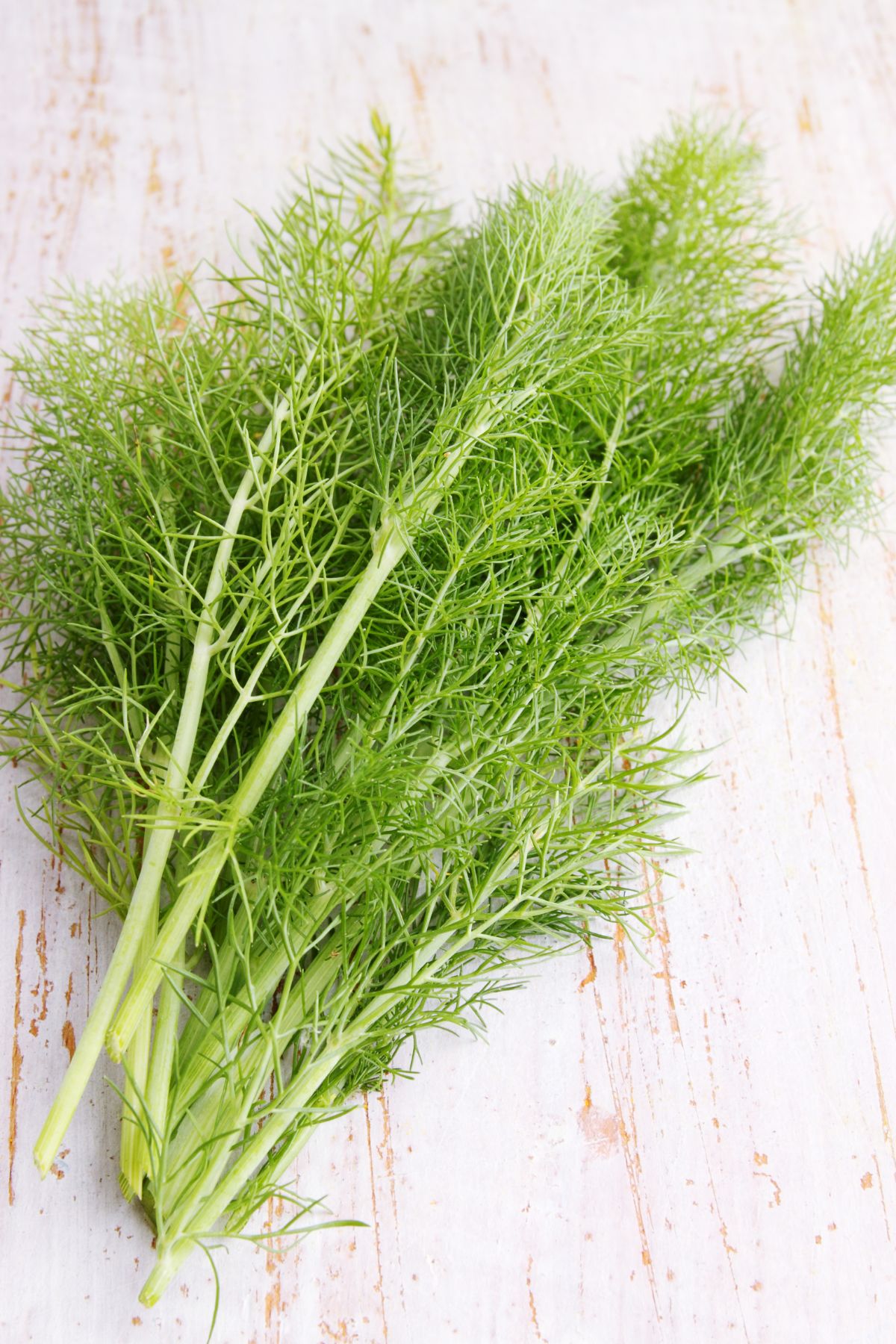
Fennel is one of my favorite alternatives to fresh dill. It has similar anise and licorice notes and feathery fronds that have a similar appearance to those of dill weed.
The bulb of fennel is considered a vegetable and can be cooked separately, so it’s really just the fronds you need when looking for a replacement for dill.
You can use them in any recipe where fresh dill is required, including salads, sauces, dips, and dressings.
For 1 teaspoon of fresh dill, use 1 teaspoon of fresh fennel.
3. Tarragon
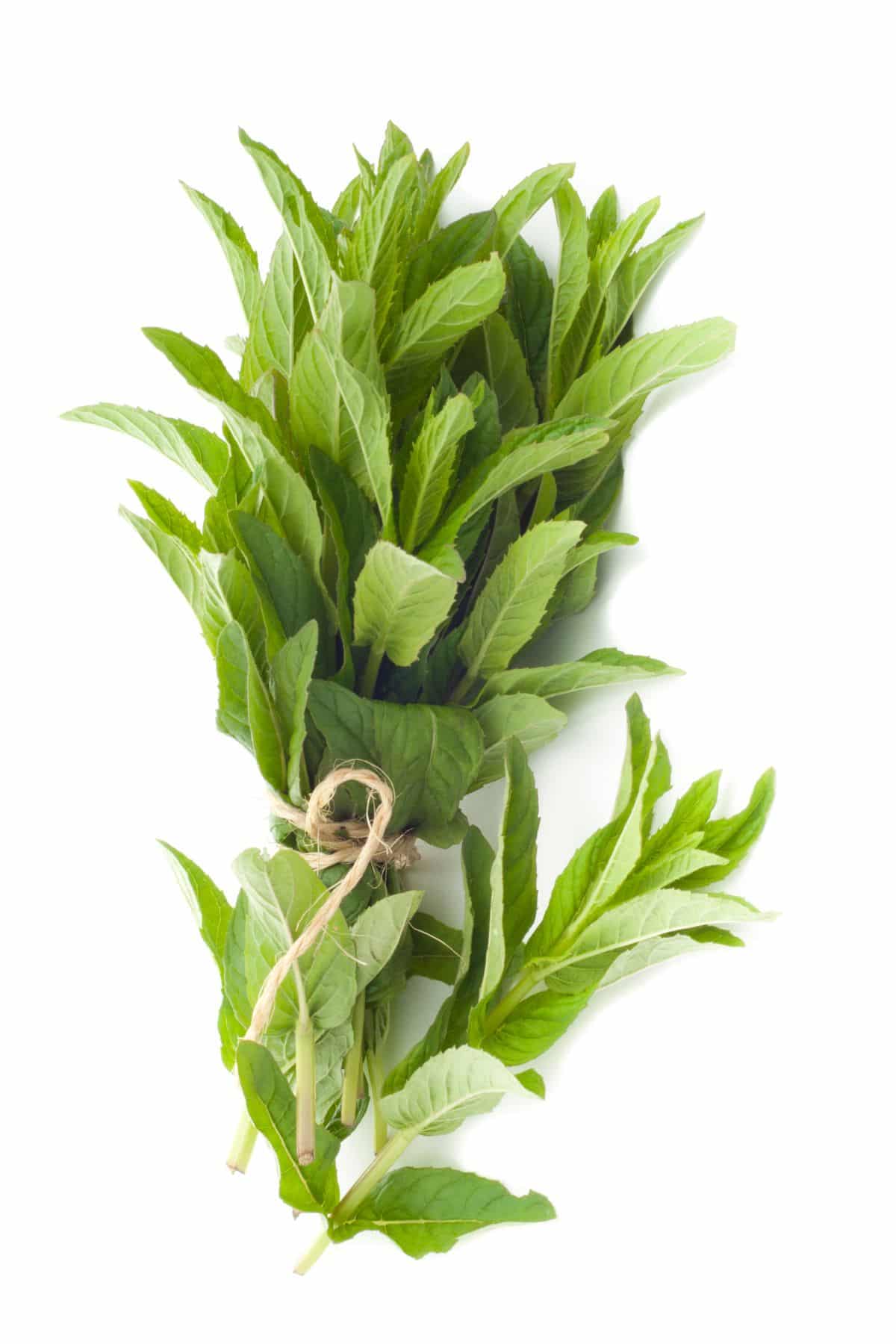
Like dill, tarragon has a pleasant anise flavor. Although there are three different varieties – Mexican, French, and Russian – it’s the French kind you’re most likely to encounter at the grocery store.
It works best as a replacement for dill in stews, sauces, seafood dishes, and dressings.
One big difference between tarragon and dill is that tarragon is far more robust with intense flavor. This means that it keeps its flavor even when heated, so it can be added right at the beginning of the cooking time if you wish.
Try to get fresh tarragon, if possible, as it is closer in taste to fresh dill than the dried variety.
For 1 teaspoon of fresh dill, use 1 teaspoon of fresh, chopped tarragon.
For 1 teaspoon of fresh dill, use 1/3 teaspoon of dried tarragon.
4. Parsley
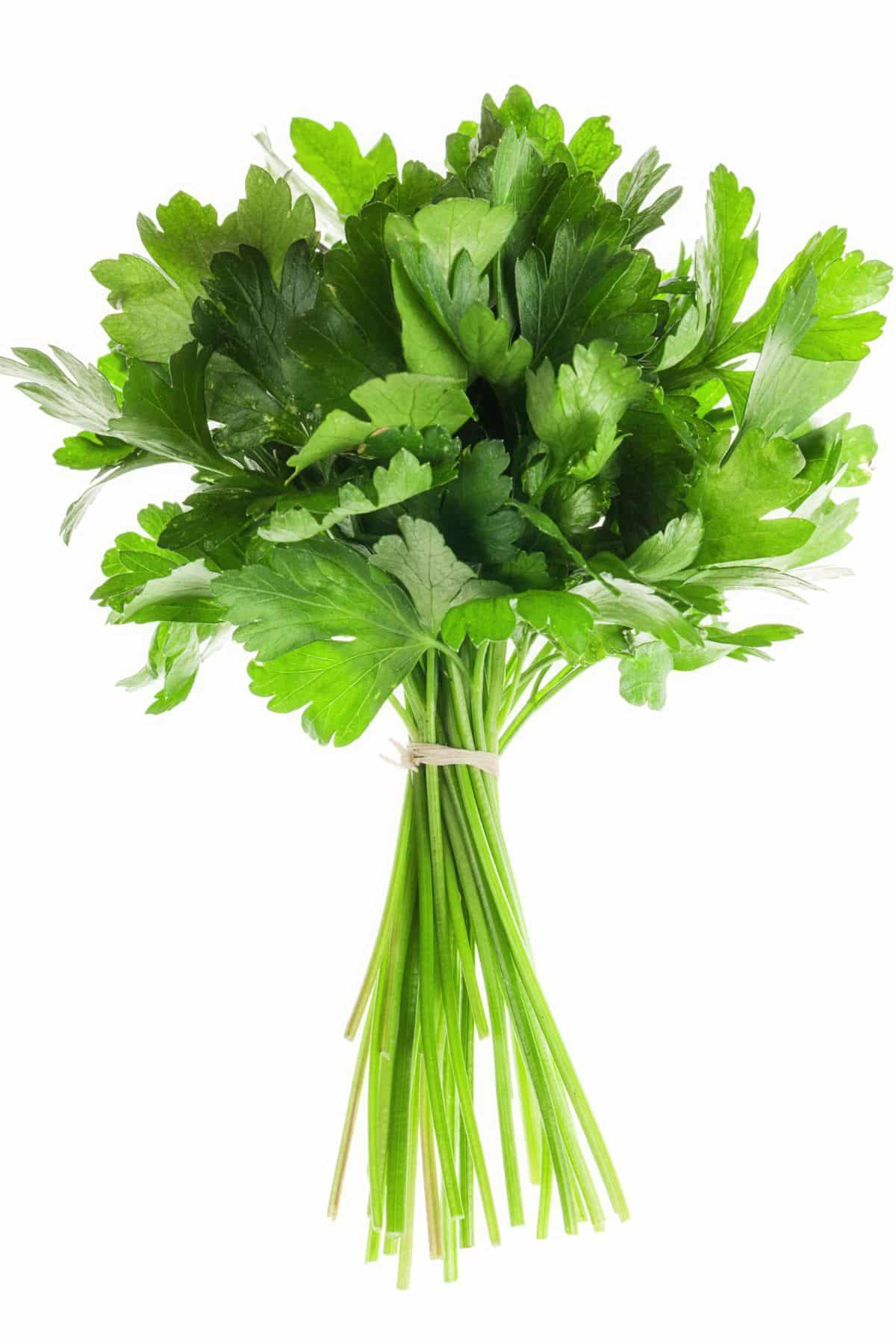
Like dill, parley has a bright green color and a feathery appearance, making it a great substitute to use as a garnish. I always recommend using flat-leaf parsley if you have a choice (as opposed to curly parsley).
In terms of flavor, parsley and dill are quite different. But in recipes where dill isn’t the primary ingredient, you could try using parsley instead as it is mild in taste and won’t dominate the dish. Parsley has a milder flavor than dill.
For 1 teaspoon of fresh dill, use 1 teaspoon of fresh parsley.
5. Basil
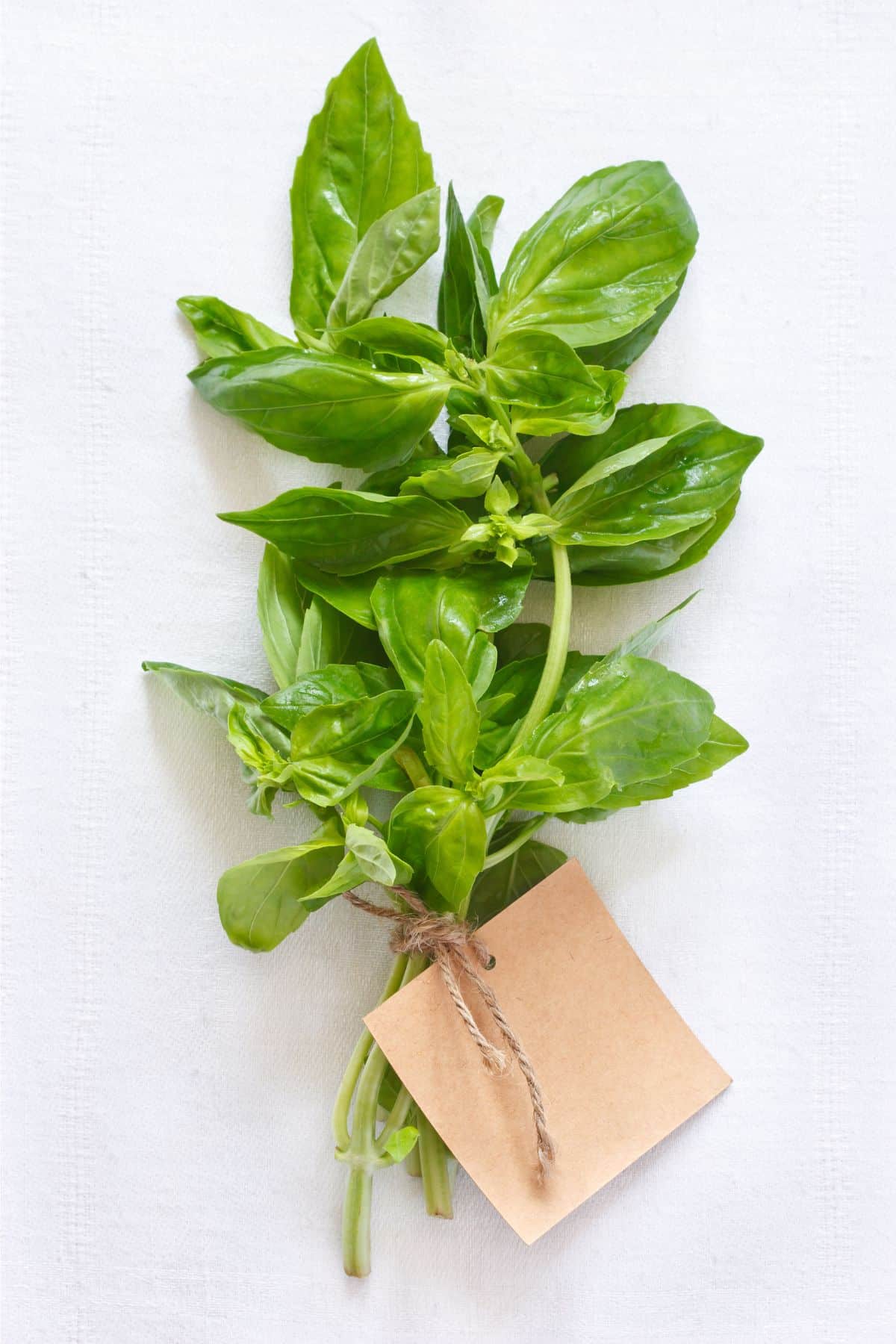
Basil may not taste quite like dill but it does have very slight hints of anise. It is also a warm and aromatic herb with a taste that most people love. Choose fresh basil rather than dried, as it is slightly closer to dill in flavor.
It is ideal for dishes like soups, stews, and salads but I wouldn’t recommend using it in dishes where dill is the primary ingredient (unless you want to change the dish significantly).
Both basil and dill are common in the Mediterranean region, and they both have a strong flavor.
For 1 teaspoon of fresh dill, use 1 teaspoon of fresh basil.
6. Thyme
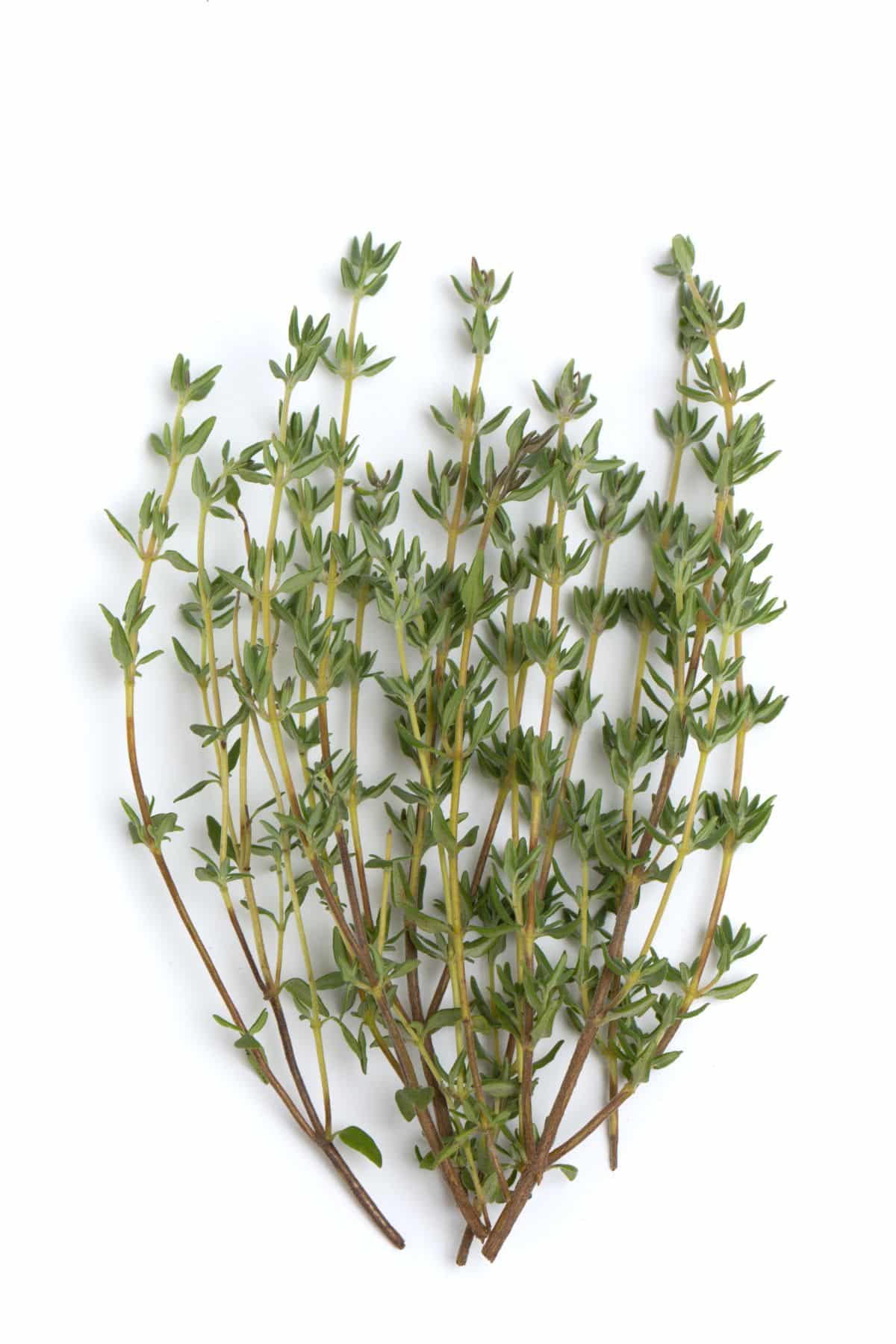
The clean, slightly woody flavor of thyme can make a great alternative to dill in all sorts of dishes, from stews and meat to seafood and sauces.
Whilst it differs from dill in that it has no anise notes, it is still very aromatic and adds a delicious warmth to your dishes.
It stands up to cooking a lot better than dill and heat actually brings out its flavor. For that reason, you can add thyme earlier in your recipe than you would add dill.
Do note, though, that thyme is quite a bit more pungent, so you won’t need to use as much in your dish.
For 1 teaspoon of fresh dill, use 1/2 teaspoon of fresh thyme, then adjust as necessary.
7. Cilantro
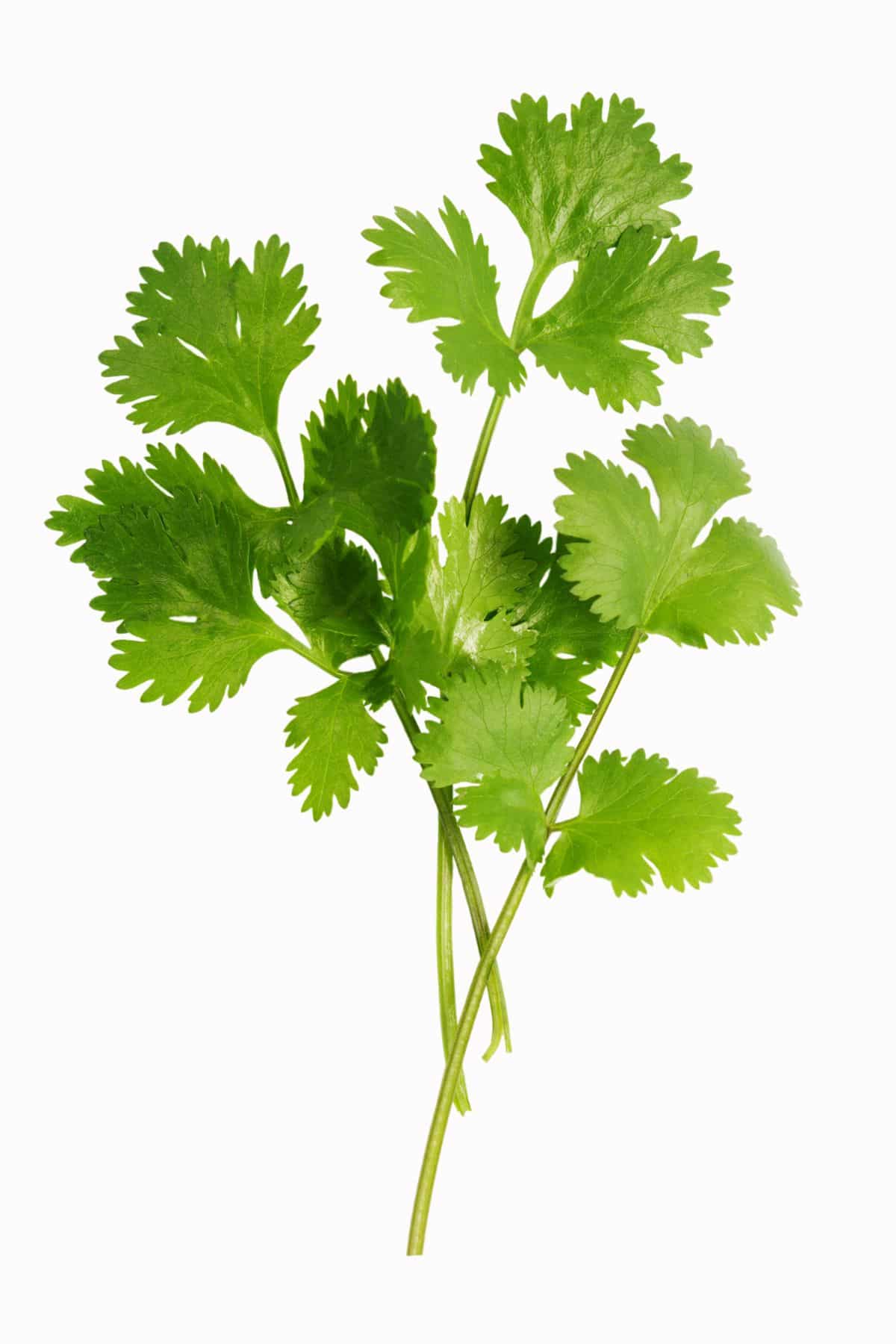
Although dill and cilantro come from the same family, they are quite different in flavor.
Nevertheless, you could try cilantro as an alternative to dill in your recipes where it isn’t the dominant ingredient.
Its flavor is quite unique and not to everybody’s taste, so you might want to try using just a little at first.
For 1 teaspoon of fresh dill, use 1/2 teaspoon of fresh cilantro, then adjust as necessary
All About Dill
The dill plant (official name Anethum graveolens) is also known as dill weed. Commonly used in Asian and European dishes, it has feathery green leaves that make it a popular choice as a garnish.
The flavor of dill is quite unique-an aromatic blend of anise or licorice and caraway, with a little hint of citrus.
Dill seeds come from the same plant as dill leaves, but are considered a spice and have a very different flavor. Much more pungent than the delicately flavored leaves, they taste strongly of caraway and are used to season dill pickles.
In this article, I’ve shared some of the best alternatives for dill in cooking.
Health Benefits
Since dill tends to be used in fairly small quantities, the health benefits we get from it are quite limited.
Nevertheless, dill is rich in a wide variety of vitamins and minerals. It has historically been used in Ayurvedic medicine as a remedy for halitosis (bad breath), infant colic, and digestive problems.
There have also been studies that suggest dill can help lower levels of blood sugar, which could be useful in managing diabetes.
Cooking Tips
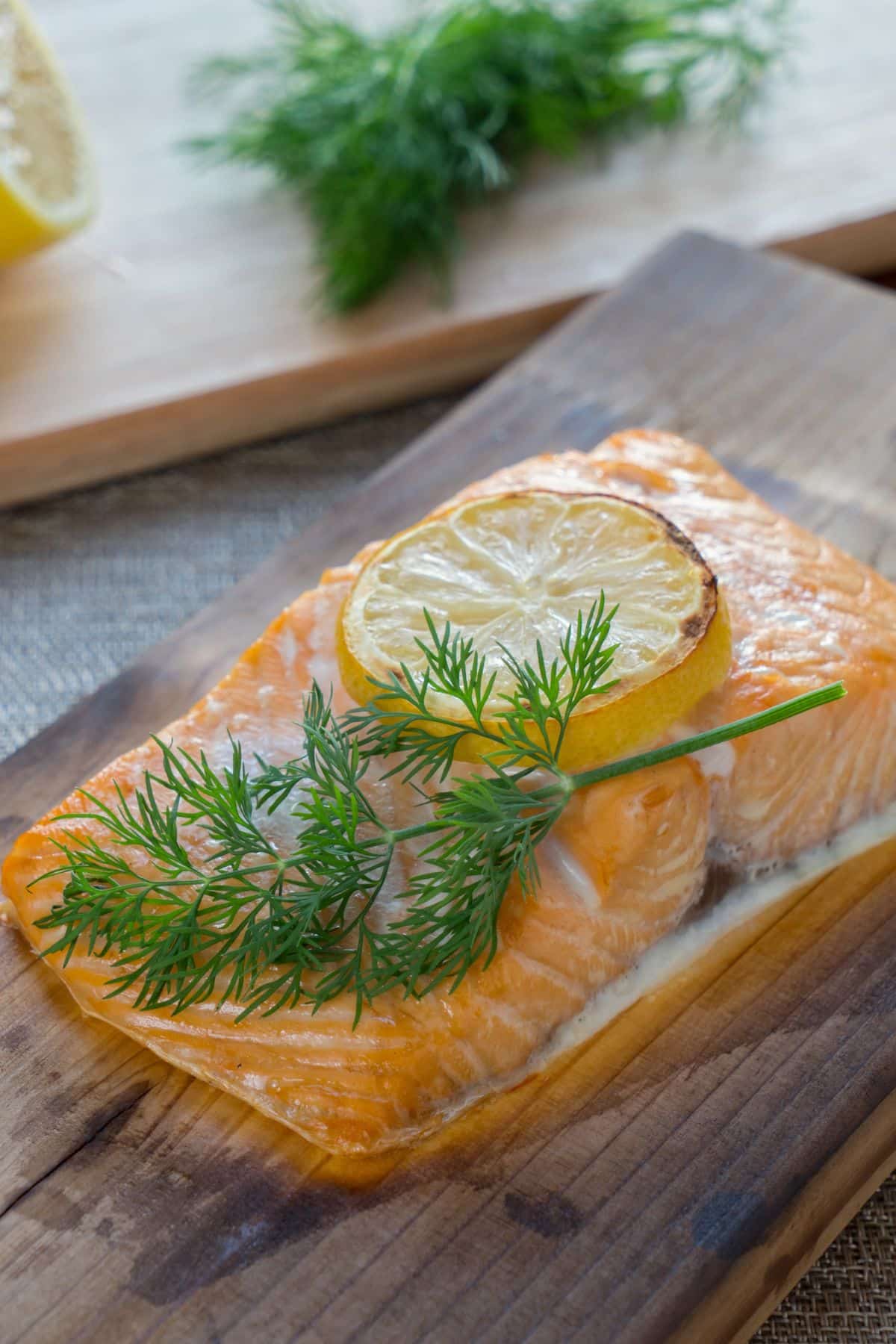
- Dill goes well with fish (especially salmon), chicken (like this chicken salad recipe), meat dishes, potatoes, potato salad, and eggs. It can also be used in sauces, salad dressings, and in salads. Dill is common in French cuisine and is considered a common herb.
- Fresh dill is extremely delicate, so it is best added to dishes during the last few minutes of cooking so that its flavor is preserved.
- When buying dill, make sure to select bunches that have bright green leaves and avoid those with yellow or brown leaves.
- Store dill in the fridge – wrapped loosely in plastic – for up to one week. You can make it last longer by placing the bunch in a glass of water, then covering it with plastic. Fresh dill can also be frozen – it holds its flavor remarkably well.
- If you are using home-grown dill, be careful in the summer months. Dill has a tendency to flower (or “bolt”) in warmer temperatures. This affects the flavor of the leaves, making them more bitter.
Summary of Using Dill Substitutes
Here is a summary of the best dill substitutes, along with the pros and cons of each one. Be sure to keep reading to find the amounts to use when substituting for fresh dillweed.
| Substitute | Pros | Cons |
|---|---|---|
| Dried Dill | Closest in flavor to fresh dill; works well in cooked dishes | Lacks the brightness of fresh; inferior in taste for salads and dressings |
| Fennel | Similar anise/licorice notes; visually similar; versatile in use | Flavor profile differs; may not be suitable for all dill-specific dishes |
| Tarragon | Pleasant anise flavor; robust, retains flavor when heated; versatile | More robust than dill; may overpower in delicate dishes |
| Parsley | Bright green color, feathery appearance; mild taste | Quite different in flavor; may not substitute well in dill-centric recipes |
| Basil | Slight hints of anise; warm and aromatic | Significantly different taste; not ideal where dill is primary |
| Thyme | Clean, slightly woody flavor; aromatic; heat brings out flavor | No anise notes; more pungent; careful with quantity |
| Cilantro | Unique flavor; from the same family as dill | Flavor not liked by everyone; significantly different taste |
FAQs About Dill Substitutes
It can be tempting to use dill seeds as a replacement for dill weed. But the flavor of the seeds is quite bitter and much stronger, with almost camphorous notes. This means that they don’t work well as a replacement, so I’d recommend using one of the substitutes listed above instead.
Caraway seeds have a much different flavor than dill, so it’s not considered a good substitute for dill.
Celery seeds aren’t the best substitute for dill, either, as they have a strong flavor that differs from that of dill. Consider some of the other good dill substitutes listed above.
More Articles About Substituting You Might Like
- Substitutes for Bay Leaves
- Substitutes for Lemongrass
- Substitutes for Marjoram
- Substitutes for Oregano
- Substitutes for Sage
Don’t Miss These Articles!
Conclusions
I hope that you have found this guide to dill substitutes useful and that you feel inspired to experiment a little with your recipes. While dill may not be easy to replace, there are several options you can try that will give equally delicious results. Who knows, you might even discover that using a different herb produces a dish that you prefer to the original!
Don’t forget to join my newsletter list to get exclusive clean eating recipes and tips. The newsletter is 100% free with no spam; unsubscribe anytime.
About the Author: Carrie Forrest has a master’s degree in public health with a specialty in nutrition and is a certified holistic nutritionist. She is a top wellness and food blogger with over 5 million annual visitors to her site. Carrie has an incredible story of recovery from chronic illness and is passionate about helping other women transform their health. Send her a message through her contact form.


